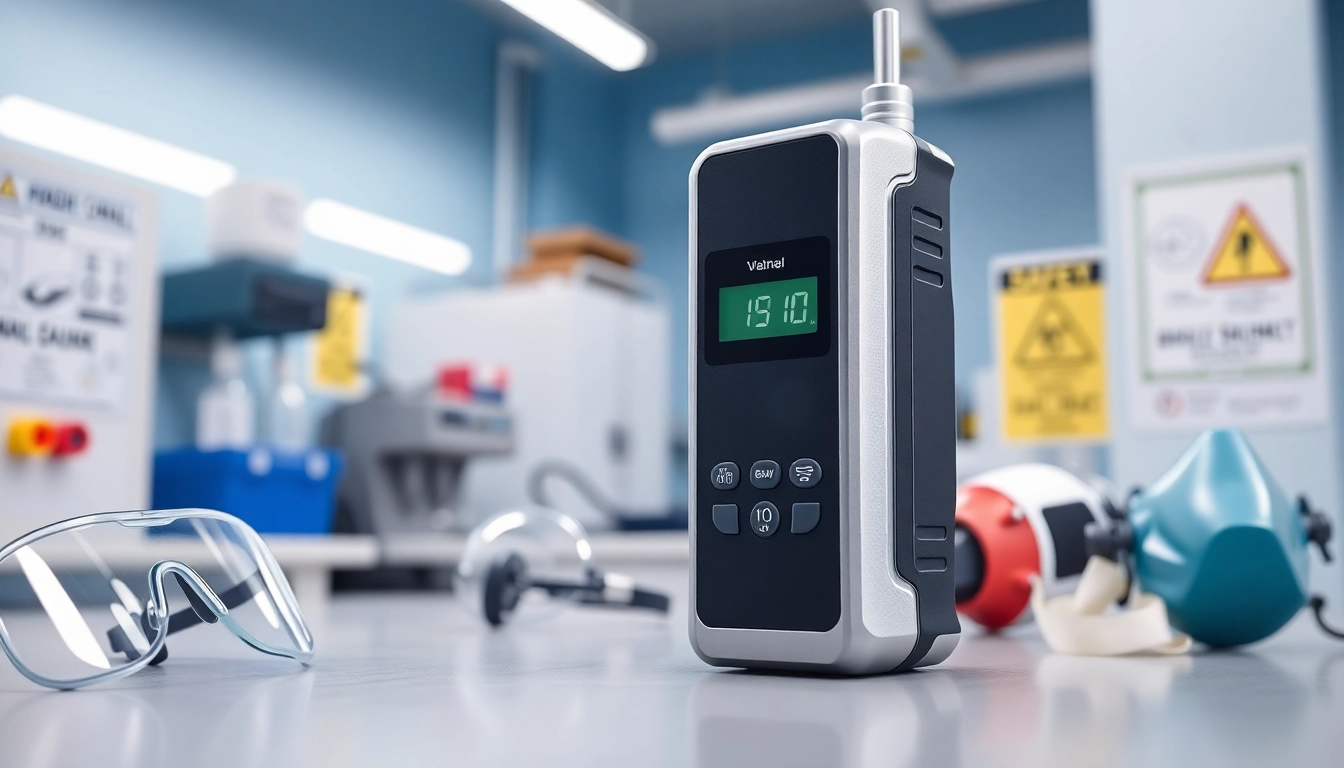Understanding Hydrogen Sulfide and Its Hazards
What is Hydrogen Sulfide?
Hydrogen sulfide (H2S) is a colorless gas known for its distinct, foul odor reminiscent of rotten eggs. It is a highly toxic and flammable substance found in various industrial and environmental settings. This gas occurs naturally in crude petroleum, natural gas, volcanic emissions, and sewage, but it can also be generated through human activities, particularly those involving the breakdown of organic matter in anaerobic conditions.
Common Sources of Hydrogen Sulfide
H2S originates from multiple sources, including:
- Petroleum Refining: H2S is a byproduct in the refining process of crude oil.
- Sewage Treatment: In wastewater treatment facilities, bacteria produce H2S when breaking down organic matter.
- Natural Gas Extraction: H2S can be found in some natural gas reserves, leading to potential exposure during extraction and processing.
- Industrial Processes: Various industries such as pulp and paper, mining, and food processing generate H2S as a waste product.
Health Risks Associated with Exposure
Exposure to hydrogen sulfide poses significant health risks, varying from mild irritation to severe physiological effects. Low concentrations (below 10 ppm) can cause irritation of the eyes and respiratory tract, while higher concentrations (100-200 ppm) can lead to headaches, dizziness, and nausea. Extreme exposure (over 500 ppm) can result in rapid unconsciousness and even death within minutes.
Chronic exposure, even at lower levels, can lead to long-term health issues, including respiratory complications and central nervous system damage. Due to these hazards, ensuring safety through proper detection is paramount.
Importance of Using a Hydrogen Sulfide Gas Detector
Why Detection is Critical for Safety
The use of a hydrogen sulfide gas detector is vital due to the gas’s hazardous nature and its potential for rapid onset of serious health issues. Early detection systems help prevent exposure and provide essential warnings to workers and emergency responders in any setting where H2S is present. Implementing detection devices significantly lowers the risk of health emergencies and fatalities.
Regulatory Standards and Compliance
Workplaces handling hydrogen sulfide must comply with various regulatory standards, set by organizations such as the Occupational Safety and Health Administration (OSHA) and the American National Standards Institute (ANSI). For instance, OSHA mandates immediate detection systems where employees are at risk of H2S exposure. Regulations often require routine checks and calibrations of these systems to ensure they function correctly, further emphasizing the need for effective gas detection apparatus.
Choosing Between Portable and Fixed Sensors
When selecting a hydrogen sulfide gas detector, organizations face the decision of choosing between portable and fixed sensors. Portable detectors are ideal for personal safety and mobility in diverse environments, allowing workers to carry them into different locations. In contrast, fixed sensors are advantageous in stationary setups like industrial plants, providing constant monitoring and integrated alarm systems. The choice between these options depends on the specific operational needs and exposure risks of the environment.
Key Features to Consider When Selecting a Detector
Measurement Range and Sensitivity
The measurement range of a hydrogen sulfide gas detector is crucial for adequate performance. Detectors should have a range that covers low concentrations for safety compliance, typically starting from parts per million (ppm) levels up to higher emergency thresholds. Sensitivity is equally important, as detectors must react promptly to even small increases in H2S concentrations to ensure the safety of personnel.
Alarm Systems and Notifications
A reliable alarm system is one of the primary features to look for in a hydrogen sulfide gas detector. It should include both audible and visual alerts, ensuring that all workers in the vicinity are aware of potential risks. Advanced models may also provide smartphone notifications or other communication methods to inform personnel about gas levels, enhancing safety and response times during emergencies.
Battery Life and Maintenance
Battery life plays a significant role in the effectiveness of portable hydrogen sulfide gas detectors. A longer battery life minimizes maintenance interruptions and ensures continuous monitoring without frequent recharging or replacements. Additionally, proper maintenance practices, including regular calibration, are essential to the accuracy of detectors. Users should follow manufacturer guidelines for maintenance schedules to uphold performance reliability.
Top Hydrogen Sulfide Gas Detectors on the Market
Leading Brands and Their Offerings
When searching for the right hydrogen sulfide gas detector, several reputable brands lead the market. Prominent names include:
- MSA Safety: Known for durable and reliable detectors, MSA offers both portable and fixed solutions suitable for various industries.
- Honeywell: Honeywell’s gas detectors feature advanced technology, providing accuracy and user-friendly interfaces, making them popular in hazardous environment management.
- Dräger: Dräger produces high-end detectors with exceptional sensitivity and integrated data logging capabilities for compliance tracking.
Comparison of Features and Prices
When comparing features and prices of hydrogen sulfide gas detectors, it’s important to consider what is included with each model. Prices can range significantly based on functionality, with basic portable models starting at a few hundred dollars, while advanced systems with multi-gas capabilities and data recording functions can exceed several thousand. Evaluating features like sensitivity, alarm type, and connectivity options will help determine the best value for specific organizational needs.
User Reviews and Experiences
User reviews and experiences should not be overlooked when selecting a gas detector. Feedback often provides insight into the practical aspects of using devices, including real-world performance, maintenance needs, and responsiveness. Persistent issues noted by users can signal potential concerns about reliability, while consistently high ratings may indicate a trustworthy brand or model worth considering.
Best Practices for Using a Hydrogen Sulfide Gas Detector
Installation Tips for Optimal Performance
Proper installation of hydrogen sulfide gas detectors is crucial for optimal performance. Consider the following installation tips:
- Location: Install detectors in areas where H2S exposure is most likely, such as near gas sources, in confined spaces, or where leaks may occur.
- Height: Position detectors according to the manufacturer’s guidelines; H2S is heavier than air, so sensors may need to be placed lower to the ground.
- Accessibility: Ensure detectors are easily accessible for regular maintenance checks and calibration, promoting compliance and operational efficiency.
Regular Maintenance and Calibration
Routine maintenance and calibration are essential for ensuring hydrogen sulfide gas detectors are functioning correctly. Follow these best practices:
- Regular Calibration: Calibrate each detector according to the manufacturer’s instructions, generally recommended at least every 6 months or more frequently in high-risk environments.
- Visual Inspections: Conduct regular visual checks to look for signs of damage or wear. Ensure that alarm systems and indicators work properly.
- Document Maintenance: Keep records of maintenance activities, including calibration dates and results, to ensure compliance and performance tracking.
Training Employees on Safe Practices
Employee training is an often overlooked yet critical element in maintaining safety when utilizing hydrogen sulfide gas detectors. Implement comprehensive training programs covering:
- Understanding H2S: Educate employees about the properties of hydrogen sulfide, the risks associated with exposure, and how detectors work.
- Proper Use of Equipment: Train workers on how to correctly use and interpret readings from gas detectors. This includes recognizing alarm levels and knowing evacuation protocols.
- Emergency Response: Conduct drills focusing on emergency response plans when H2S is detected, ensuring employees know how to react quickly and appropriately.



